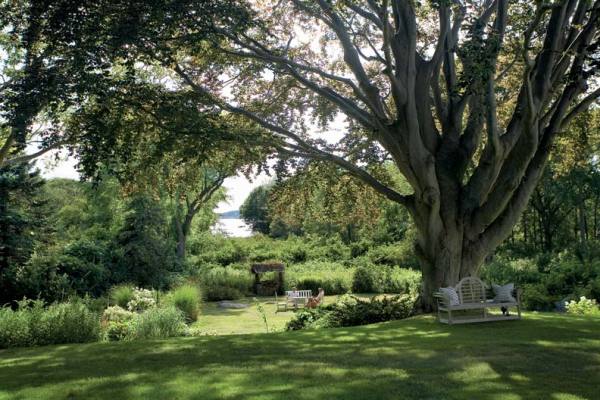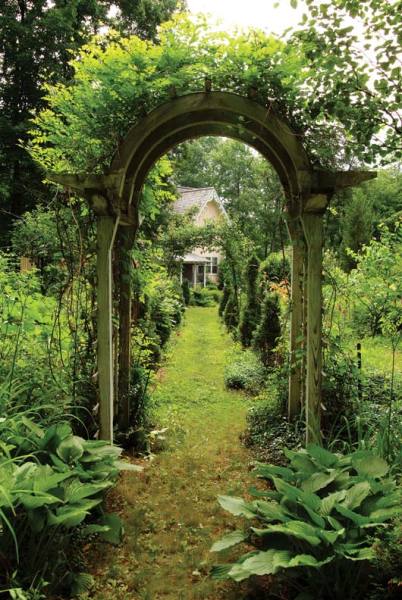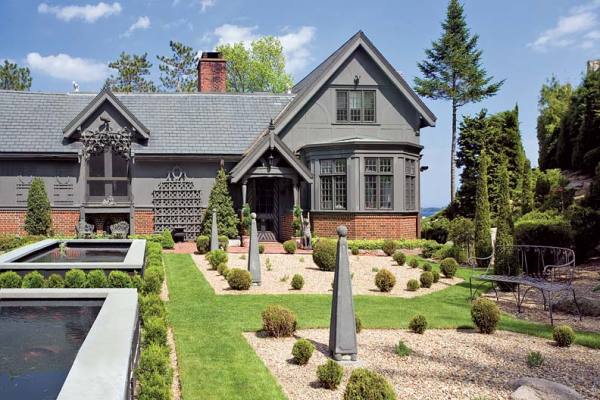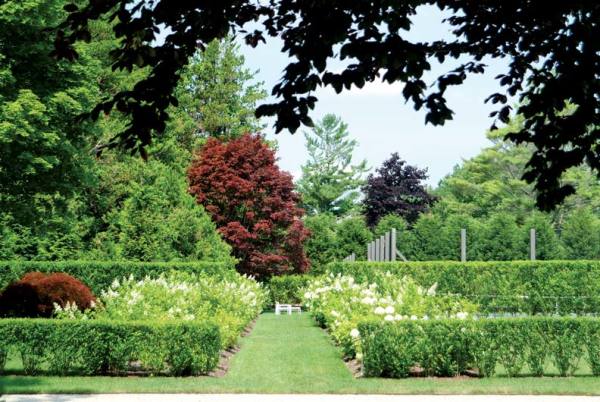
Maintaining a lawn is more environmentally friendly than we once thought.
A greener lawn doesn’t refer to just the color of the grass, but also environmentally friendly gardening methods. You might be tempted to think that gardening is the greenest of all hobbies. After all, what could be problematic about spending time in the great outdoors creating your personal Eden? But the sad truth is that gardening, at least as we practice it today in America, isn’t particularly green. How so? Well, for starters, consider the amount of petroleum that goes into most landscapes.
There’s oil in all those plastic pots; there’s oil in the fertilizer; oil heats the greenhouses that produce those lush annuals that tempt you each year; oil transports all those plants to the nursery, and finally, to your home. Then, of course, there’s our love affair with lawns. For years we’ve been hearing that lawns are a bad thing: pampered, petroleum-consuming mono-cultures that make deserts seem rich by comparison. Rip out lawns, and replace them with shrubs, or groundcover, or even gravel has been the mantra for decades.
But recent independent research is starting to suggest this view might be too simplistic. Lawns, of a proper size—we’ll talk more about that in a minute—are not quite the bugaboo we previously thought. Grasses, it seems, are tremendously efficient mechanisms for filtering and purifying rainwater before it reaches the watershed, and can serve as significant reservoirs for storm runoff in extreme weather conditions. (A majority of water pollution in urban environments occurs when storm runoff overwhelms municipal systems, flooding lakes and streams with raw sewage.)

Use an electric mower—in one hour, gas mowers create as much pollution as 11 new cars driving one hour each.
In city environments, there’s also the air-conditioning factor: Grasses can lower ambient temperatures as much as 30º compared to adjacent artificial surfaces, and more and more rooftops, parking lots, and other hard surfaces are being converted to green space in order to reduce ambient warming and trap rainwater. Plus, there’s considerable psychological benefit to those tiny soft blades: Who isn’t soothed by the soft, rolling green of a good lawn?
But here’s the catch: To fully “green” your grass, you’ll need to break some bad habits we’ve accumulated in the last few decades. First, and perhaps most important, for landscapes under a half-acre, you must switch to an electric mower. (Or hire a maintenance service that uses them—there are several services that are actually solar-powered!) In a single hour of operation, a gas mower produces as much pollution as 11 new cars driving one hour each, according to EPA studies. Collectively, gas mowers produce 5 percent of all air pollution from mobile sources in the US. The good news is that these days, electric mowers are powered by high-efficiency batteries, not cords, and the technology has advanced to the point where a single charge will mow up to a half-acre at a time. I’ve been using battery-powered mowers for five years, and have never looked back. (Not to mention never having had to buy another gallon of gasoline.) Better yet, electric mowers are almost silent: only a pleasant, low-pitched hum marks my progress back and forth across the lawn, meaning I can mow whenever I want, not when my neighbors want.
Second, the practice of throwing resources at your grass helter-skelter must be banished for good. Clean water is rapidly becoming a precious commodity, and the overwatering of lawn areas contributes significantly to scarcity issues in many parts of the country. But that doesn’t have to be the case. Lawns only need an inch of water a week—just like most other plantings—but many people pour on the water because they think that’s what’s required to keep the grass green, when in reality color is as much a factor of fertility as it is of moisture. Very often, if your lawn is brown, the problem is that it has been under-fertilized. I must admit I’ve been a poster child for this bad habit: Until fairly recently, I threw some fertilizer on my grass every other year or so, and promptly forgot about it. It was growing, wasn’t it? Yes, it was, but not well, and I had the water bill to prove it.

Grass paths are an eco-friendly alternative to hardscaping.
For a really healthy lawn, you need to fertilize not just once, but three times a year: in the very early spring, again in late spring, and in the early fall. A well-fed lawn with a deep, extensive root system stays green and resists drought; even more important, healthy grass has far fewer noxious weeds. Given sufficient nourishment, turf crowds out the competition all on its own, and removes the need for herbicide applications. Of course, it goes without saying, when applying any kind of fertilizer, you must follow the manufacturer’s instructions to the letter in terms of quantity and application method—making sure fertilizer stays on the lawn and out of the watershed is terribly important. Also, if you use an automatic irrigation system, you need to install a rain sensor that overrides pre-programmed water settings in wet weather. I can’t tell you how many times in my travels I’ve watched sprinklers rotating uselessly in the rain, needlessly adding wear and tear to the irrigation system, wasting energy, and pouring precious water, if you’ll pardon the obvious pun, right down the drain.

Create balance in your garden with a variety of plantings and shrubs.
Even more critically, stop raking and bundling up your leaves. I can almost hear the howls from here: “Sacrilege, sacrilege! What is he saying? Has he lost his gardening marbles?” But wait—here’s the trick, direct from the turf experts: Mow your leaves into the lawn instead. Several passes of the mower, reducing the leaf fragments to the size of dimes, allow the leaf mass to sink down between the blades of grass, converting the biomass into fertilizer while improving the tilth, or quality, of the soil beneath (something fertilizer applications can never do). It’s absolutely amazing how much leaf waste can be absorbed into the average lawn; recent tests have shown that up to 18″ of leaves can be successfully absorbed by grass each year. The glory of this process is that not only can you abandon all that raking, but you also save the energy required to bag and dispose of immense quantities of leaves.
Finally, as with all aspects of your garden, you need to carefully analyze the amount of lawn on your property. My grandfather used to say that landscapes that are more than 50 percent grass aren’t landscapes; they’re just would-be pastures longing for sheep. And that’s even more applicable today. Truly greening your landscape requires creating a series of balanced, diverse micro-environments in your garden that will appeal to the widest possible range of natural species. That means not just leaving room for turf, but for wilder, un-mown areas; places for native plants; water sources for wildlife; and flowering species for birds and insects. Diversity is not the just byword in nature: It can, and should be, the byword in your back yard as well.
Landscape designer and PBS horticultural guru Michael Weishangardens outside Boston and writes a nationally acclaimed weekly garden blog at michaelweishan.com.







